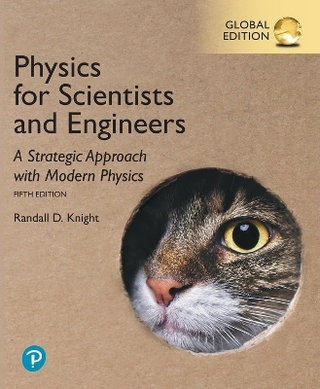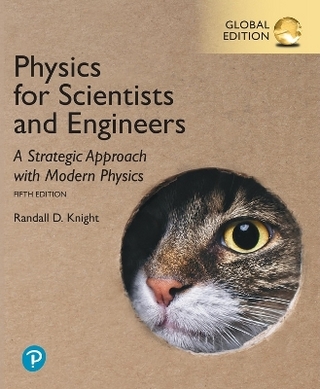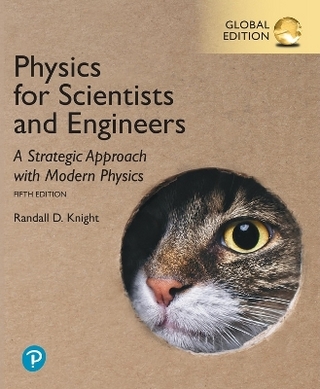
Fundamentals of Electric Propulsion – Ion and Hall Thrusters
Wiley-Blackwell (Hersteller)
978-0-470-43644-8 (ISBN)
- Keine Verlagsinformationen verfügbar
- Artikel merken
Throughout most of the twentieth century, electric propulsion was considered the technology of the future. Now, the future has arrived. This important new book explains the fundamentals of electric propulsion for spacecraft and describes in detail the physics and characteristics of the two major electric thrusters in use today, ion and Hall thrusters. The authors provide an introduction to plasma physics in order to allow readers to understand the models and derivations used in determining electric thruster performance. They then go on to present detailed explanations of: Thruster principles Ion thruster plasma generators and accelerator grids Hollow cathodes Hall thrusters Ion and Hall thruster plumes Flight ion and Hall thrusters Based largely on research and development performed at the Jet Propulsion Laboratory (JPL) and complemented with scores of tables, figures, homework problems, and references, Fundamentals of Electric Propulsion: Ion and Hall Thrusters is an indispensable textbook for advanced undergraduate and graduate students who are preparing to enter the aerospace industry.
It also serves as an equally valuable resource for professional engineers already at work in the field.
Dan M. Goebel, PhD, is a Senior Research Scientist in the Advanced Propulsion Technology Group at JPL in Pasadena, California. Since joining JPL in 2003, he has worked on the development of high-efficiency ion thrusters, advanced long life cathodes and grids, and electric-thruster life models for deep space missions. He is a world-recognized expert in ion thrusters, cathodes, advanced plasma sources, microwave sources, high-voltage engineering, and pulsed power switches.? Ira Katz, PhD, has led the Advanced Propulsion Technology Group at NASA JPL since 2001. Group accomplishments during his tenure include the development and testing of the 25 kW NEXIS ion thruster, successful completion of the world's longest electric thruster life test, development of technology and support for precision formation flying missions (ST7, Lisa, TPF-I), and laboratory investigations and computer modeling of fundamental electric propulsion physics. Dr. Katz is recognized as a world leader in computer modeling of spacecraft-plasma interactions, spacecraft charging, and ion thruster physics.
Note from the Series Editor. Foreword. Preface. Acknowledgments. Chapter 1: Introduction. 1.1 Electric Propulsion Background. 1.2 Electric Thruster Types. 1.3 Ion Thruster Geometry. 1.4 Hall Thruster Geometry. 1.5 Beam/Plume Characteristics. References. Chapter 2: Thruster Principles. 2.1 The Rocket Equation. 2.2 Force Transfer in Ion and Hall Thrusters. 2.3 Thrust. 2.4 Specific Impulse. 2.5 Thruster Efficiency. 2.6 Power Dissipation. 2.7 Neutral Densities and Ingestion in Electric Thrusters. References. Problems. Chapter 3: Basic Plasma Physics. 3.1 Introduction. 3.2 Maxwell's Equations. 3.3 Single Particle Motions. 3.4 particle Energies and Velocities. 3.5 Plasma as a Fluid. 3.6 Diffusion in Partially Ionized Gases. 3.7 Sheaths at the Boundaries of Plasmas. References. Problems. Chapter 4: Ion Thruster Plasma Generators. 4.1 Introduction. 4.2 Idealized Ion Thruster Plasma Generator. 4.3 DC Discharge Ion Thruster. 4.4 Kaufman Ion Thrusters. 4.5 rf Ion Thrusters. 4.6 Microwave Ion Thrusters. 4.7 2-D Computer Models of the Ion Thruster Discharge Chamber. References. Problems. Chapter 5: Ion Thruster Accelerator Grids. 5.1 Grid Configurations. 5.2 Ion Accelerator Basics. 5.3 Ion Optics. 5.4 Electron Backstreaming. 5.5 High-Voltage Considerations. 5.6 Ion Accelerator Grid Life. References. Problems. Chapter 6: Hollow Cathodes. 6.1 Introduction. 6.2 Cathode Configurations. 6.3 Thermionic Electron Emitter Characteristics. 6.4 Insert Region Plasma. 6.5 Orifice Region Plasma. 6.6 Hollow cathode Thermal Models. 6.7 Cathode Plume-Region Plasma. 6.8 Hollow Cathode Life. 6.9 Keeper Wear and Life. 6.10 Hollow Cathode Operation. References. Problems. Chapter 7: Hall Thrusters. 7.1 Introduction. 7.2 Thruster Operating Principles and Scaling. 7.3 Hall Thruster Performance Models. 7.4 Channel Physics and Numerical Modeling. 7.5 Hall Thruster Life. References. Problems. Chapter 8: Ion and Hall Thruster Plumes. 8.1 Introduction. 8.2 Plume Physics. 8.3 Plume Models. 8.4 Spacecraft Interactions. 8.5 Interactions with Payloads. References. Problems. Chapter 9: Flight Ion and Hall Thrusters. 9.1 Introduction. 9.2 Ion Thrusters. 9.3 Hall Thrusters. References. Appendices. A: Nomenclature. B: Gas Flow Unit Conversions and Cathode Pressure Estimates. C: Energy Loss by Electrons. D: Ionization and Excitation Cross Sections for Xenon. E: Ionization and Excitation Reaction Rates for Xenon in Maxwellian Plasmas. F: Electron Relaxation and Thermalization Times. G: Clausing Factor Monte Carlo Calculation. Index..
| Erscheint lt. Verlag | 1.11.2008 |
|---|---|
| Verlagsort | Hoboken |
| Sprache | englisch |
| Maße | 150 x 250 mm |
| Gewicht | 666 g |
| Themenwelt | Naturwissenschaften ► Physik / Astronomie |
| Technik ► Elektrotechnik / Energietechnik | |
| Technik ► Luft- / Raumfahrttechnik | |
| Technik ► Maschinenbau | |
| ISBN-10 | 0-470-43644-1 / 0470436441 |
| ISBN-13 | 978-0-470-43644-8 / 9780470436448 |
| Zustand | Neuware |
| Haben Sie eine Frage zum Produkt? |
aus dem Bereich


